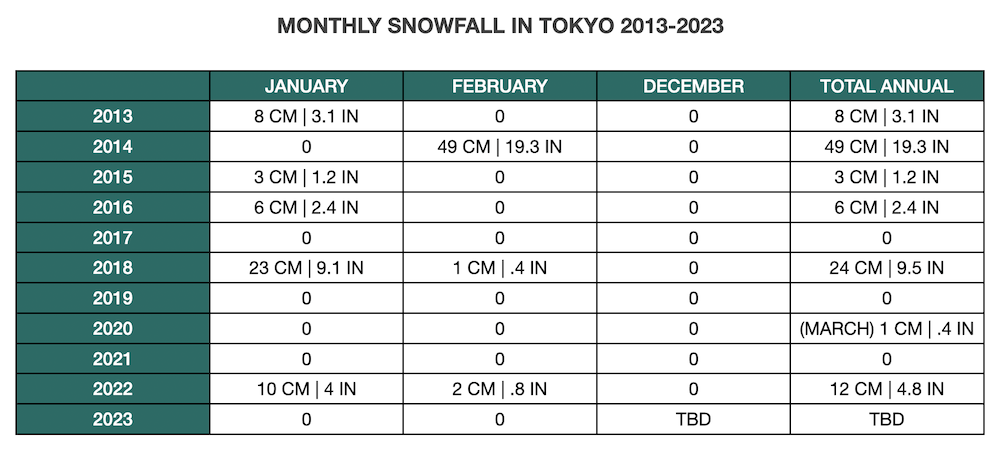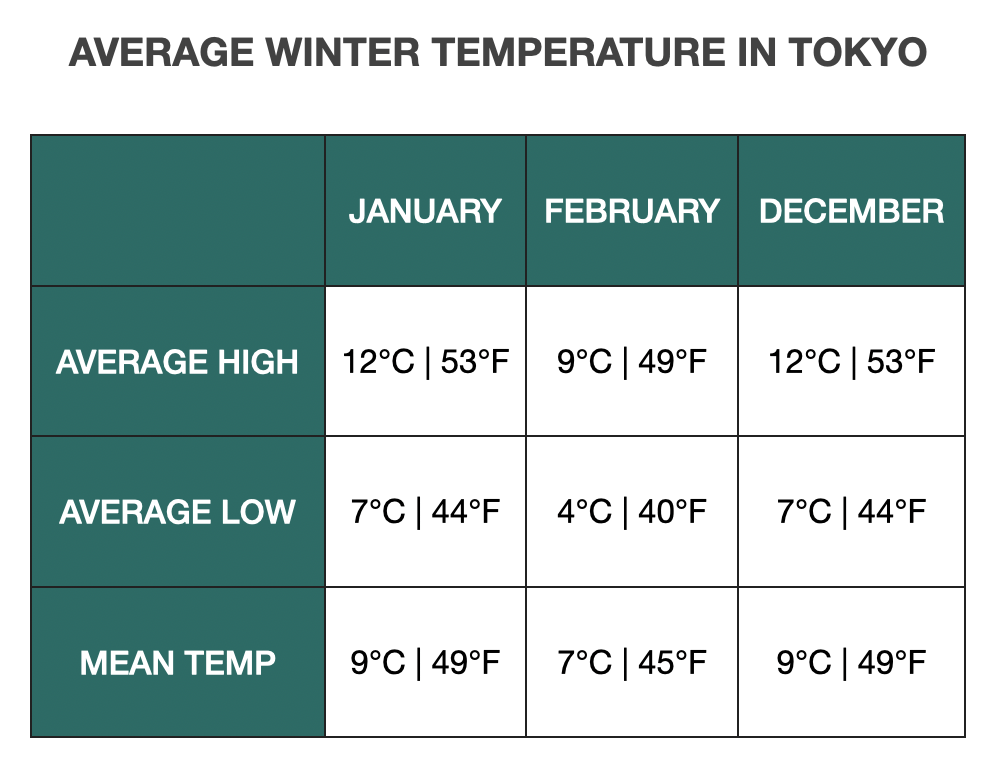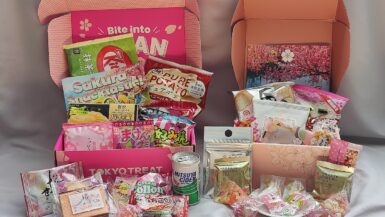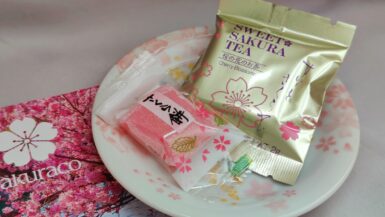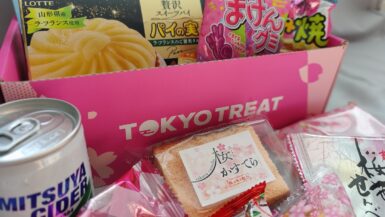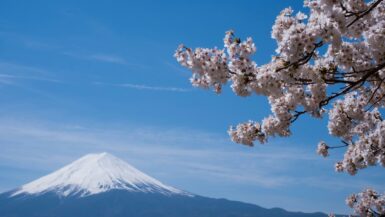
Does it snow in Tokyo?
As a former resident of Japan, this is a question I often get asked by friends preparing to visit the country.
While Japan might seem small, its weather can vary drastically depending on where in the country you are.
In this post, I’ll dive into everything you need to know about the weather and snow in Tokyo.
Does it Snow in Tokyo?
TL;DR: Yes, it snows in Tokyo– sometimes.
It’s not remotely close to what you’d see in Hokkaido or other northern parts of Japan, but Tokyo does see the occasional snowfall.
Note that it doesn’t always happen every year and most of the time it’s just a light dusting.
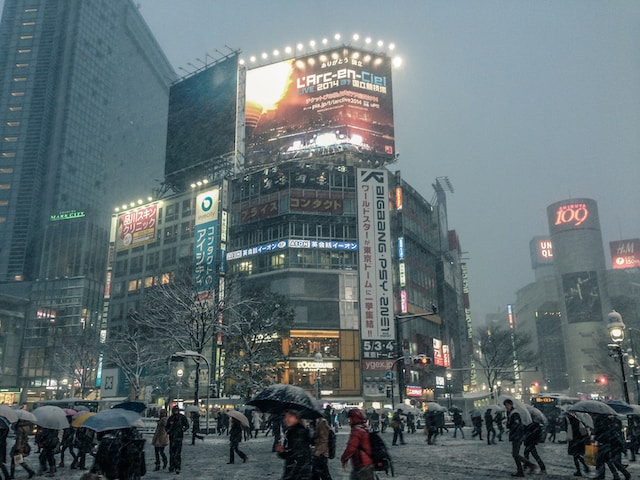
Does it Snow in Tokyo in December?
Over the last 10 years, it has not snowed in Tokyo in December.
If it does snow, Tokyo will typically experience it in January or sometimes February.
How Often Does Tokyo Snow?
On average, it snows in Tokyo once or twice in the winter with an annual total of 2-4 inches (5-10 cm).
However, it’s not always a guarantee.
No snowfall was recorded for three out of the last 10 years according to the Japan Meteorological Agency.
On the other end of the spectrum, when it does snow, it sometimes can fall quite heavily.
For example, in January 2022, Tokyo received a year’s worth of snow in a single day due to a storm.
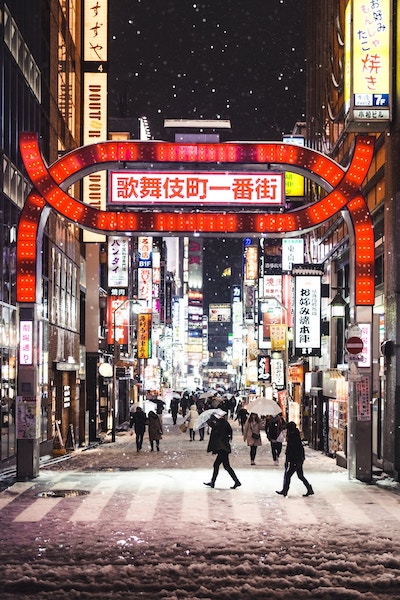
Winter in Tokyo
Winter in Tokyo is from December to February.
While it doesn’t often get snow, be prepared for most of the city to be shut down in case of heavy snowfall (well, heavy for the area).
This applies mostly to public transportation such as trains and planes.
Generally speaking, Tokyo experiences an average of 9-11 days of light rainfall per winter month, but nothing too extreme that would severely alter your sightseeing plans.
There’s also minimal wind, roughly six hours of sunshine per day, and a mix of clear skies and some clouds– all making Tokyo a pleasant city to visit during the winter!
How Cold Does it Get in Tokyo?
In the winter, expect temperatures in Tokyo to be around 40°F-53°F (4°C-12°C).
Here are the average winter temperatures for comparison:
Things to Do Around Tokyo in Winter
There’s no shortage of things to do around Tokyo no matter what season you visit!
Take a look at these top activities in the area for your next winter trip to Japan.
Check Out Winter Illuminations
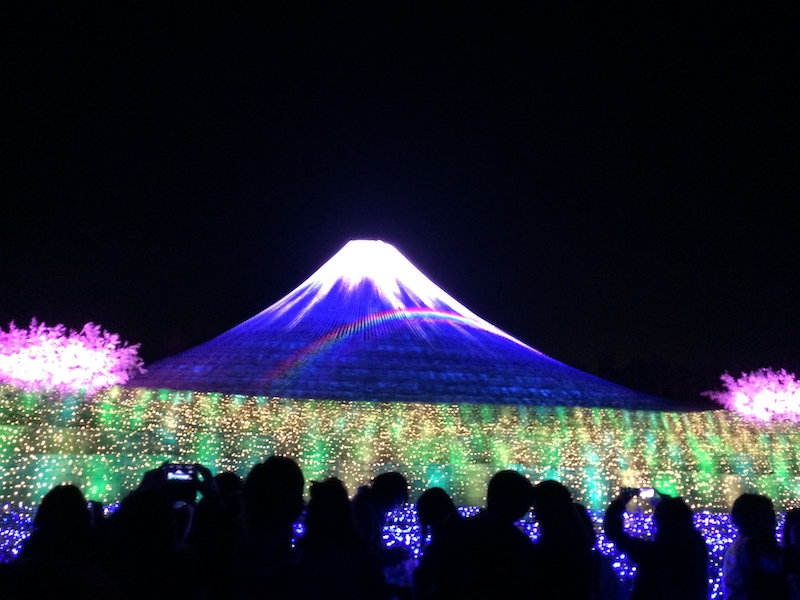
Japan loves its winter illuminations.
These can range from the typical fairy lights wrapped around tree-lined streets to parks completely lit up for the winter season with a variety of light installations and themes.
If you’re just interested in being a casual observer, stop by any popular shopping area such as Omotesando in Harajuku or Ginza and you’re sure to see some top-notch lights.
For those who want the full winter illumination experience, Tokyo has several large-scale installations that stay up throughout the season at the following locations:
❇️ Tokyo Midtown
❇️ Tokyo Dome City
❇️ Yomiuriland Jewellumination
❇️ Blue Cave Shibuya: Street (Koen Dori) between Shibuya Station and Yoyogi Park
These events can be easily navigated on your own, but you can also book a tour with a local guide.
💡 Some winter illumination events run through the spring to overlap with sakura mania. So if you’re wondering if it’s worth going to Japan in cherry blossom season, the answer is yes!
Enjoy an Onsen
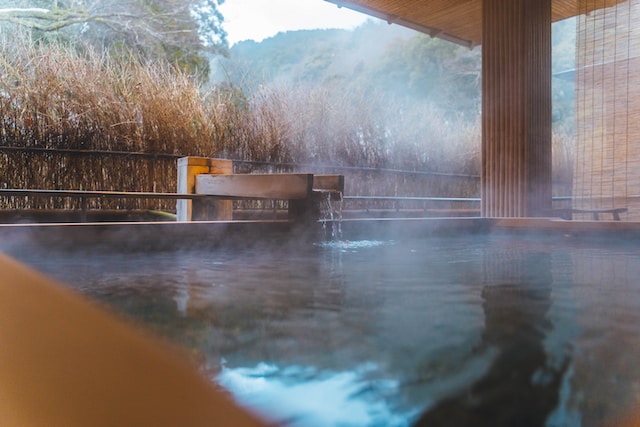
Onsen are natural hot springs in Japan.
These come in the form of different facilities, from traditional bathhouses to even spa theme parks.
Locals and tourists alike love onsen as they are great for relieving stress and easing muscle pain.
Some traditional ryokan or Japanese guesthouses even come with their own onsen.
Here are some of Tokyo’s most popular onsen:
♨️ Maenohara Onsen Sayano Yudokoro
♨️ Tokyo Somei Onsen Sakura
♨️ Toshimaen Niwa-no-yu
⚠️ Note: Tattoos are usually not permitted in most onsen facilities. However, this open-air onsen is tattoo-friendly!
Indulge in a Traditional Japanese Meal on a Dinner Cruise
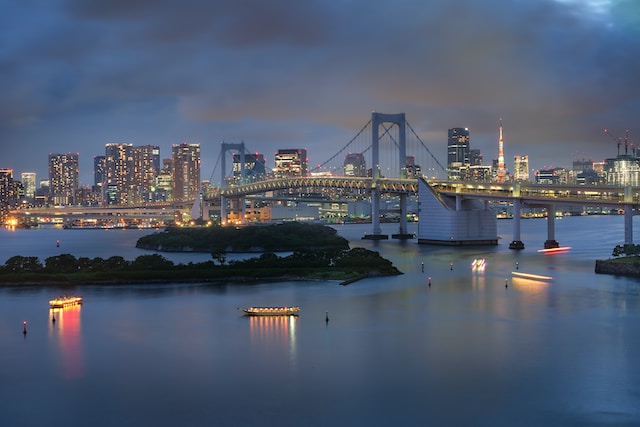
If you love unique fine dining experiences, then a yakabune should be on your Tokyo bucket list.
A Yakabune is a traditional Japanese dinner cruise that offers delectable food and even more amazing views.
In this Tokyo dinner cruise, you’ll be served 14 dishes and unlimited drinks while you sail through Tokyo Bay.
This is a perfect date night to celebrate Valentine’s Day in Japan!
Ski/Snowboard at a Snow Resort
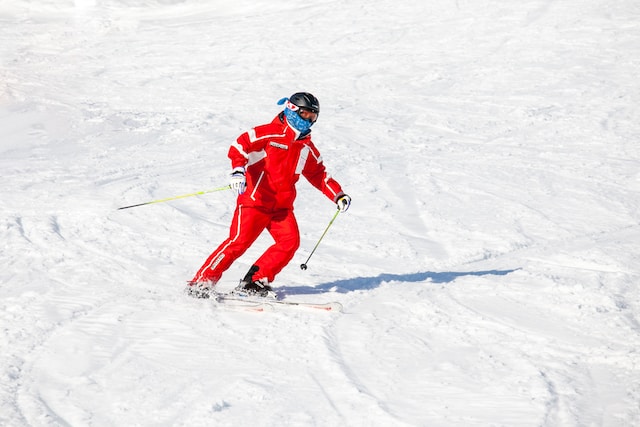
Snow lovers rejoice– you can still hit the slopes even if Tokyo doesn’t see any flurries.
Not too far from Tokyo are prefectures known for their winter sports such as Nagano and Niigata.
These areas are full of ski resorts for those looking for fresh powder.
While a bit of travel from Tokyo is required to get to any ski resort, GALA Yuzawa Snow Resort is just a 1.5 hour shinkansen (bullet train) ride away.
Try the Seasonal Cuisine
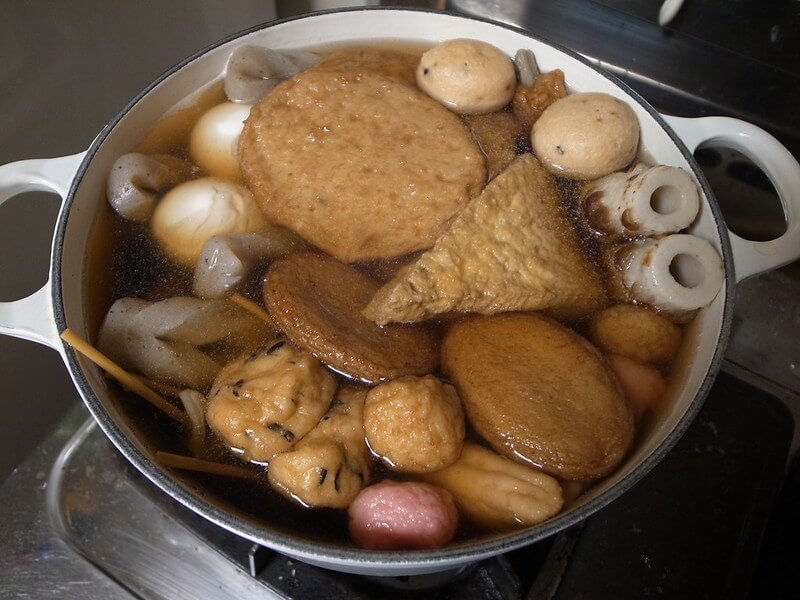
Japan is a country that embraces each season, especially the cuisine.
When different foods are in season, Japan doesn’t shy away from celebrating them.
You’ll find it everywhere from stores to festivals and street stalls.
If you’re visiting Japan in the winter, popular Japanese dishes to try include stews and warm dishes like oden or shabu shabu.
Visit a Temple or Shrine
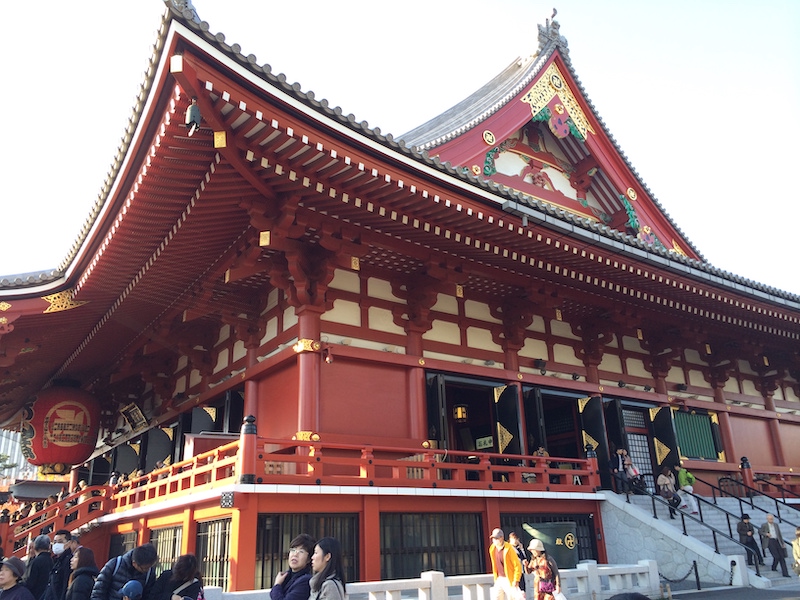
One of the top things to do in Japan is of course to visit a shrine or temple.
These architectural beauties are photogenic in all seasons– especially with a light dusting of snow!
If you’re in Tokyo, be sure to check out Senso-ji in Asakusa and Meiji-jingu in Shibuya.
Experience teamLab Planets TOKYO
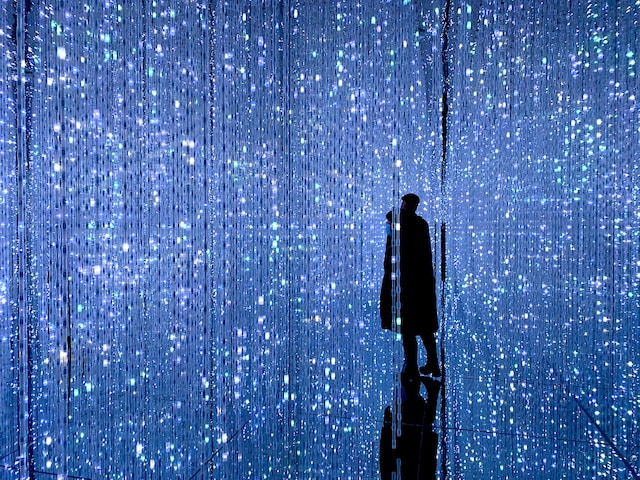
teamLab Planets TOKYO is one of the most popular Instagram spots in Tokyo.
The digital art museum features all kinds of immersive exhibits that stimulate all five senses.
The museum is located indoors, so it’s perfect for visiting in the winter.
📍 Address: 6 Chome-1-16 Toyosu, Koto City, Tokyo
⏰ Hours of Operation: Sun- Tues & Thurs- Sat, 9 am – 10 pm
⚠️ Closed: Wednesday
🎟 Purchase tickets here
Shop for a New Year Lucky Bag (Fukubukuro)
If you’re in Japan during New Year’s, why not take part in the annual tradition of purchasing a lucky bag?
Every New Year, shops sell fukubukuro, or lucky bags, that are sealed so that its contents are unknown to customers.
Sometimes they are themed, but they’re generally filled with an assortment of items that would typically be more expensive if bought separately.
Items inside the lucky New Year’s bag can be anything from toys, clothes, electronics, home goods, food, and more.
Go Sightseeing
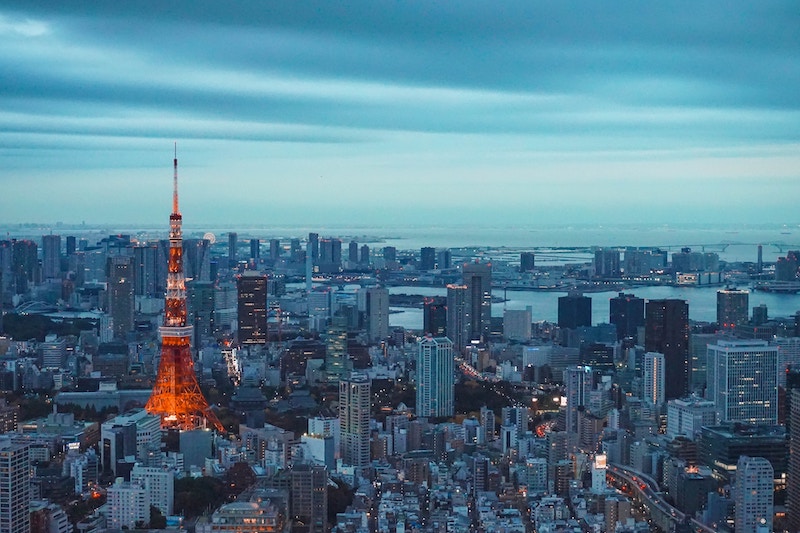
Because Tokyo doesn’t usually get extreme snowfall, sightseeing in the winter is still possible.
Tokyo is a massive city, so you’ll never run out of neighborhoods to check out or things to do.
Here are the top sightseeing destinations in Tokyo:
- 🎀 Harajuku (Takeshita Street): Fashion and kawaii district
- 🤖 Akihabara: Tech and electronics district
- 💎 Ginza: Shopping district
- 🌈 Odaiba: Entertainment district that crosses the famous Rainbow Bridge
- 🚦Shibuya Crossing: Iconic scramble with five zebra crossings
- 🗼Tokyo Skytree: Japan’s tallest tower
- 🐡 Tsukiji Fish Market: One of Japan’s most famous fish markets
- 🙏 Sensoji Temple: Oldest temple in Tokyo
- ⛩ Meiji Jingu Shrine: Famous Tokyo shrine including a garden and teahouse
- 🌿 Ueno Park: Popular cherry blossom-viewing park with lots of greenery and a zoo
- 🗼Tokyo Tower: Modeled after the Eiffel Tower
- 👑 Imperial Palace: 17th-century palace surrounded by walls, moats, and a park
What to Pack for Tokyo in Winter
So, what should you pack for Tokyo in the winter?
My top tip: layers.
While it may be chilly outside, everything indoors from shops to trains will be heated.
When I lived in Japan, I often found myself in a sweater or even just a long-sleeve shirt under a jacket if I was just ducking in and out of buildings or train stations.
If you plan on doing a bit more walking or sightseeing, you’ll want to dress a little warmer.
Coat
Any warm coat that you have will do.
I love lightweight and packable down jackets for traveling, but if you don’t have one already you can find one at any Uniqlo in Japan.
Tops
Bring a few thermal undershirts to layer under a sweater or other warm tops.
If you’re typically a warmer person, you could skip out on the thermal aspect and just layer over a t-shirt.
Bottoms
One of my favorite winter clothing finds in Japan was fleece-lined leggings and tights.
These are great for wearing under jeans, skirts, or other bottoms without looking bulky and still keeping you warm.
I’ve started seeing these online in recent years but you’ll also be able to find them at any department store in Japan.
Men who are looking for a bit more warmth can also look into fleece-lined pants or thermal underwear.
Socks and Shoes
You’ll probably be walking a ton in Tokyo and the rest of Japan, so make sure you have comfortable walking shoes and warm socks.
Miscellaneous
Some additional items to bring along:
👉 Beanie
👉 Gloves
👉 Scarf
👉 Power Bank
👉 Travel Adapter
👉 Pocket Wifi
👉 Japan Rail Pass
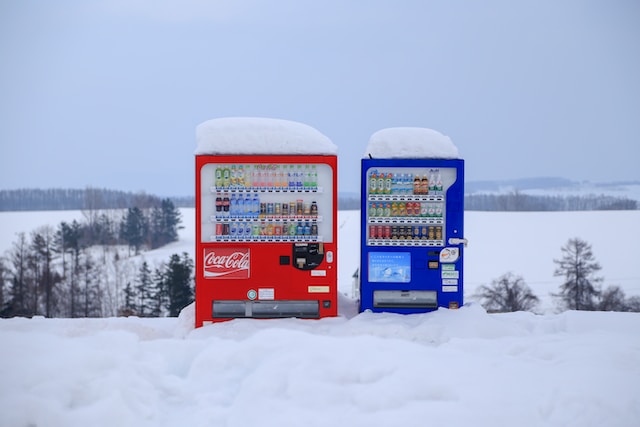
Where to Stay in Tokyo
Still need to book accommodations in Tokyo?
Here are my top picks by category:
Best Overall: Mitsui Garden Hotel Gotanda – Tokyo
Mitsui Garden Hotel Gotanda Tokyo is a modern hotel conveniently located a short distance from Tokyo Tower.
It comes equipped with a terrace, laundry services, luggage storage, and updated rooms.
Guests love how helpful and friendly the staff is.
💰 Price Range: $$
⭐ Hotel Type: 3-star
📍 Address: 2 Chome-2-6 Higashigotanda, Shinagawa City, Tokyo
Best Budget (Capsule Hotel): Rembrandt Cabin Shinjuku Shin-Okubo
What’s a trip to Japan without a stay at a capsule hotel?
Not only will you get to experience an iconic feature of Japan, but you’ll also be able to do so on a budget as capsule hotels are cheap accommodation options.
Despite cabins being small pods, the capsules at Rembrandt are still spacious enough to sit up in.
The bathrooms and common areas are well maintained, ensuring pristine cleanliness and offering excellent amenities.
💰 Price Range: $
⭐ Hotel Type: 2-star
📍 Address: 1 Chome-4-15 Hyakunincho, Shinjuku City, Tokyo
Best Traditional (Ryokan): Onsen Ryokan Yuen Bettei Tokyo Daita
Onsen Ryokan Yuen Bettei Tokyo Daita is a serene retreat that blends modernity and traditional architecture.
This boutique 35-room ryokan-style inn is centrally located in Tokyo’s Setagaya neighborhood.
Not only does it offer an open-air onsen, but guests can also enjoy a tea room and spa.
💰 Price Range: $$$
⭐ Hotel Type: 4-star
📍 Address: 2 Chome-31-26 Daita, Setagaya City, Tokyo
Best 5-Star: Mandarin Oriental, Tokyo
In contrast to Japan’s typically cozy accommodations, the Mandarin Oriental Tokyo provides some of the city’s most generously sized suites with stunning city views and 5-star amenities.
The hotel is conveniently connected to both a subway and JR train station, making it easy to explore nearby tourist destinations like Ginza, the Imperial Palace, Akihabara, and Tsukiji Fish Market.
💰 Price Range: $$$$
⭐ Hotel Type: 5-star
📍 Address: 2 Chome-1-1 Nihonbashimuromachi, Chuo City, Tokyo
Where to See Snow in Japan
If you’re keen on seeing snow in Japan during your visit, be sure to check out these top prefectures!
Nagano
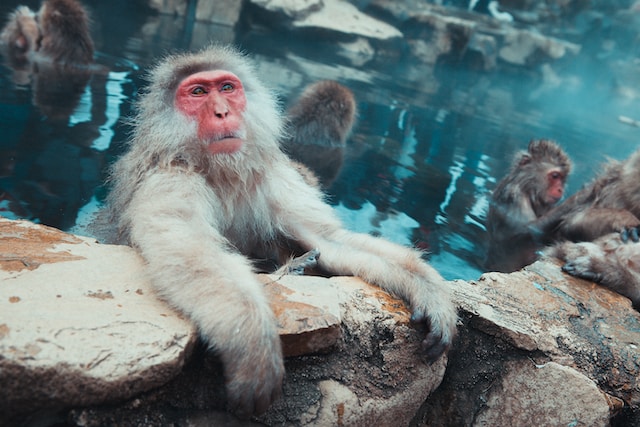
Approximately 2.5 hours away from Tokyo by shinkansen bullet train, Nagano is a top winter destination for ski resorts and picturesque views.
Highlights during the winter include:
❄️ Snow monkeys at Jigokudani Monkey Park
❄️ Frozen waterfalls in Matsumoto: Zengorou and Sanbon
❄️ Nozawa Onsen Village
❄️ Matsumoto Ice Sculpture Festival (January)
❄️ Nozawa Onsen Fire Festival (January)
Niigata
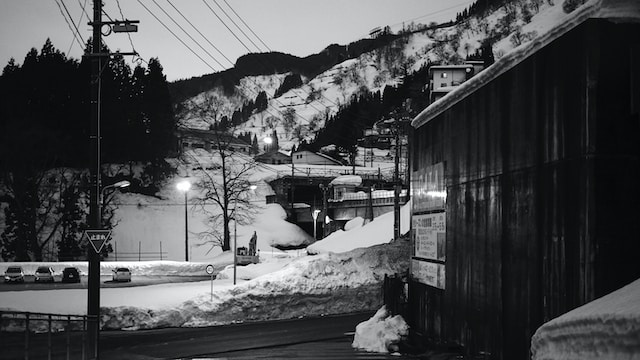
Niigata is known for receiving some of the most substantial snowfall in the region.
The snow brings visitors from more temperate prefectures for its winter activities as well as impressive snow festivals.
Highlights during the winter include:
❄️ GALA Yuzawa Snow Resort
❄️ Tokamachi Snow Festival (February)
❄️ Tsunan Snow Festival (March)
Yamagata
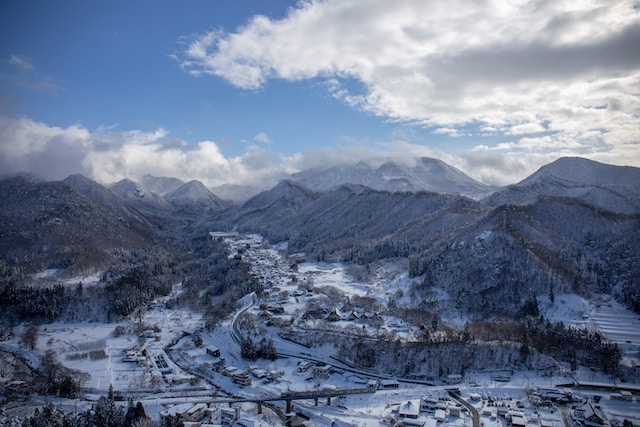
Known for its significant snowfall, Yamagata Prefecture is home to the unique “Snow Monsters.”
These are trees heavily coated with snow and form eerie yet fascinating natural sculptures.
Highlights during the winter include:
❄️ Snow Monsters at Mt. Zao
❄️ Ginzan Onsen
Hokkaido
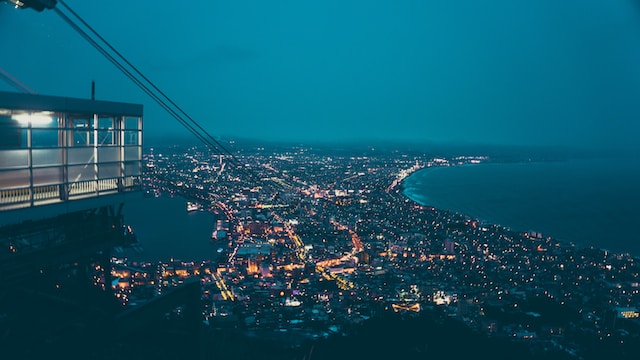
If you’re hoping to see some snow in Japan in December, Hokkaido is the spot.
The entire region undergoes a mesmerizing transformation, turning cities and villages into a winter wonderland.
Highlights during the winter include:
❄️ Sapporo Snow Festival
❄️ Odori Park White Illumination in Sapporo
❄️ Ice Village at Hoshino Resorts TOMAMU
❄️ Ningle Terrace in Furano
Akita
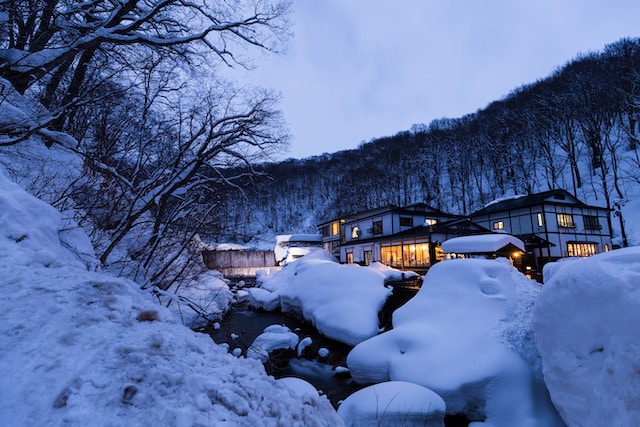
Akita is where my family is from and I purposely didn’t move here as I’m not a big winter person.
But for those who are, Akita will not let you down.
Highlights during the winter include:
❄️ Kamihinokinai Paper Balloon Festival in Semboku (Feburary)
❄️ Yokote Kamakura (Snow Hut) Festival
❄️ Inukko (Dog) Festival in Yuzawa
FAQs: Does it Snow in Tokyo?
Still have a few unanswered questions about Tokyo and snow?
This section covers the rest.
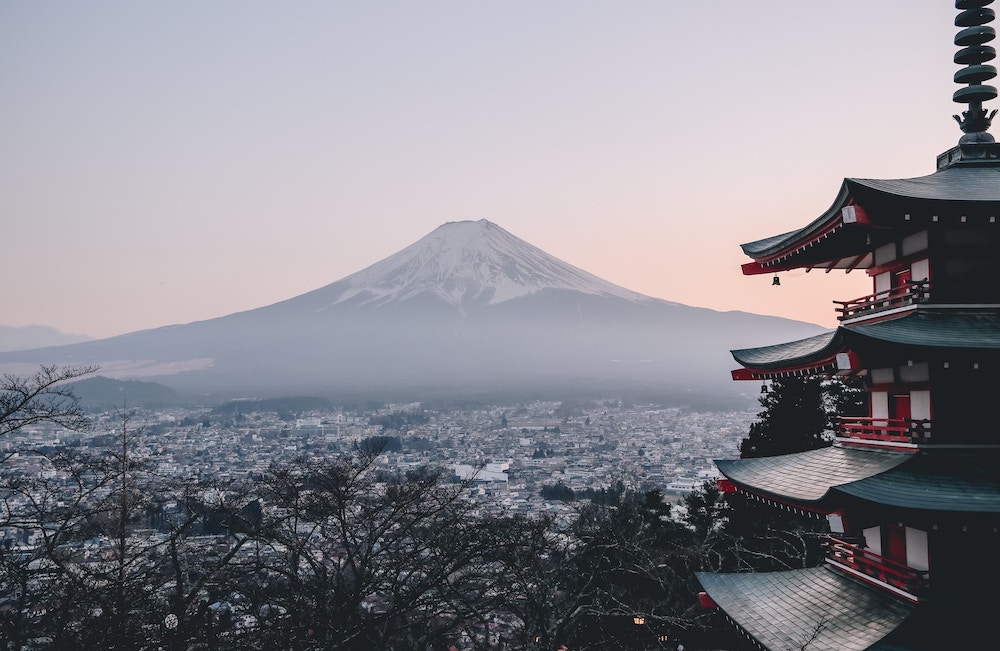
What Months Does it Snow in Tokyo?
If it snows in Tokyo, it will most likely occur in either January or February.
What is Tokyo Like in the Winter?
In the winter, the temperature in Tokyo will be between 40°F-53°F (4°C-12°C).
If it snows, it’ll most likely occur in either January or February and it’s typically a light dusting for a few days.
While snow isn’t guaranteed every year, there have also been occasions of heavy snowfall in the winter.
Does it Snow in Kyoto?
Snow in Kyoto is similar to the frequency Tokyo experiences it.
It might occur a few times throughout the winter season, but it’s typically nothing drastic.
If there is snowfall in Kyoto, most of the time it’s just a light dusting.
Does it Snow in Osaka?
Osaka also experiences the occasional light snowfall
Just 33 miles (53 km) from Kyoto, the two cities generally have the same winter climate.
Osaka might see a few days of light snow during the colder winter months (January or February), but it’s normally never anything that will cause major disruptions.
Final Thoughts: Does it Snow in Tokyo?
Yes, it does snow in Tokyo on occasion.
It’ll usually just be some light flurries that add to the beauty of Japan.
However, know that if it does snow heavily, your travel plans may require adjustments as the city’s transportation system will most likely be paused.
